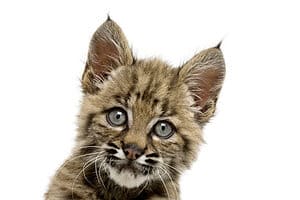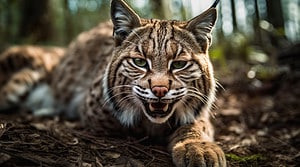Continue reading for our analysis...

A bobcat in Pecan Island, Louisiana decided that a long jump was just another walk in the park.
A crab fisherman spotted the bobcat as it walked down a deserted pier. The supports were spaced far enough apart that the bobcat had to jump from pylon to pylon. As the animal approached a long distance of open water, it climbed up on one pylon.
Maybe it was trying to get a better look.
A Perfect Jump
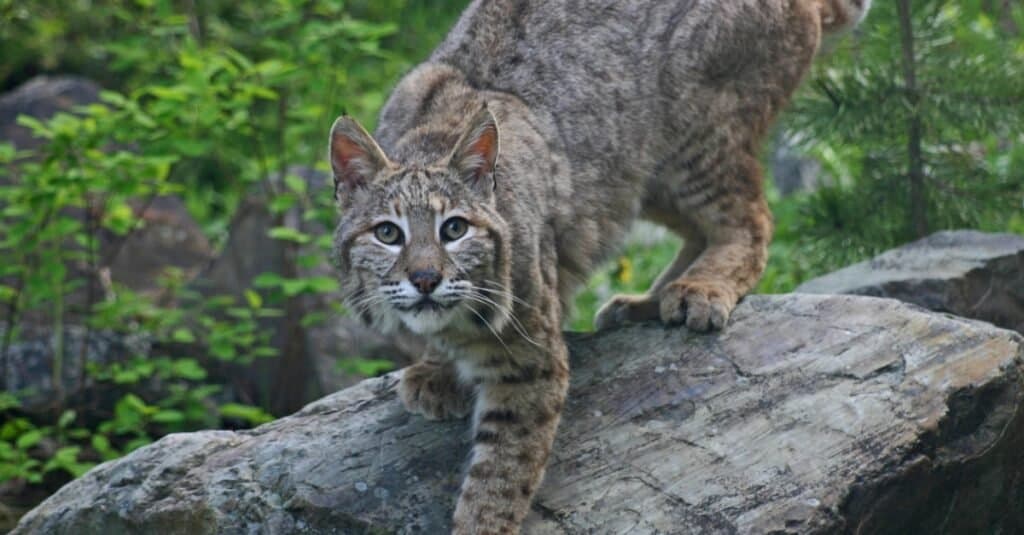
The bobcat is the smallest type of lynx cat breed and is known to be an extremely skilled jumper.
©iStock.com/Anita Elder Design
Whatever reason the bobcat had for slinking along, it used its instincts to calculate the distance of its jump with amazing precision. These animals are fierce predators that rely on their instincts.
It climbed up to the last pylon and sat on all fours, staring across the water at the next support. Bobcats are agile jumpers and this one lived up to its reputation.
The distance was easily five times the bobcat’s length. To get ready for the jump, the animal let its front feet travel down the front of the support and pushed off with its legs. It soared through the air, landing on the next support structure with ease.
Fluid Motion
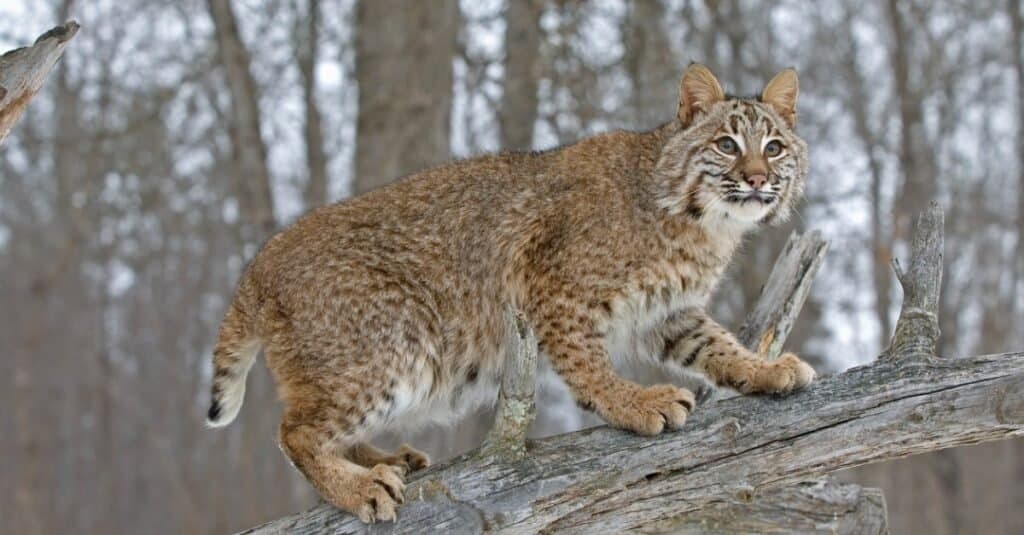
Bobcats are some of the most fearless predators, making them one of the few creatures bold enough to kill and eat venomous snakes.
©iStock.com/JohnPitcher
Just as quickly, the bobcat jumped to the next support. And then the next one. It made a total of four jumps before it eventually settled back into a walk.
There was a long plank across some of the support structures. The bobcat walked to the end with ease, as if it was nothing to jump across open water like that. Jumping to another plank, the bobcat went into the marshy grasses to continue its day.
“We were just out fishing for blue crab in Pecan Island, LA and this huge bobcat came out across the pier,” wrote the man who shot the video. “I grabbed my phone thinking he was about to get wet, but he surprised us all.”
The video is less than a minute long but shows the power and agility of these amazing animals.
Where Do Bobcats Live?
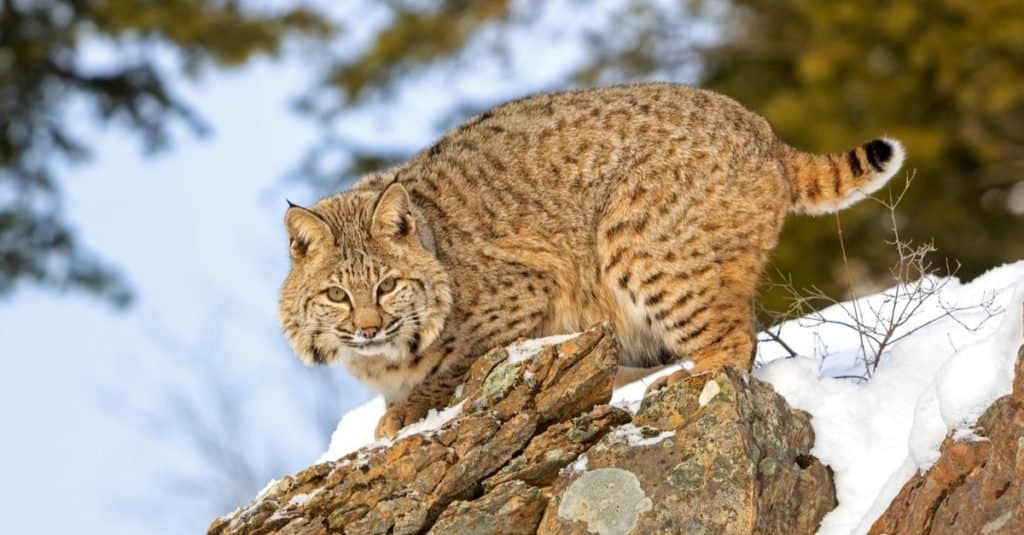
Bobcats can be found in a wide range of habitats across most of the continental United States and southern Canada.
©Jack Bell Photography/Shutterstock.com
Bobcats are native to North America and can be found in a wide range of habitats, including forests, deserts, swamps, and mountains. They are found across most of the continental United States and southern Canada, with the exception of the northernmost regions of Canada and the Great Plains.
Bobcats are found in a variety of habitats, including deciduous and coniferous forests, deserts, swamps, and mountains. They are found in most of the continental United States, including all of the lower 48 states, and southern Canada. They are common in the southeastern United States and are found in the eastern deciduous forest, the Gulf Coast, and the southwestern deserts, as well as the Rocky Mountains in the West.
Bobcats are solitary, elusive animals that are not often seen. They are active mainly during the night, dawn, and dusk and are known for their stealth and agility. They are also known for their adaptability and can survive in a wide range of habitats and climates, making them highly successful in the wild.
How Long Do Bobcats Live?
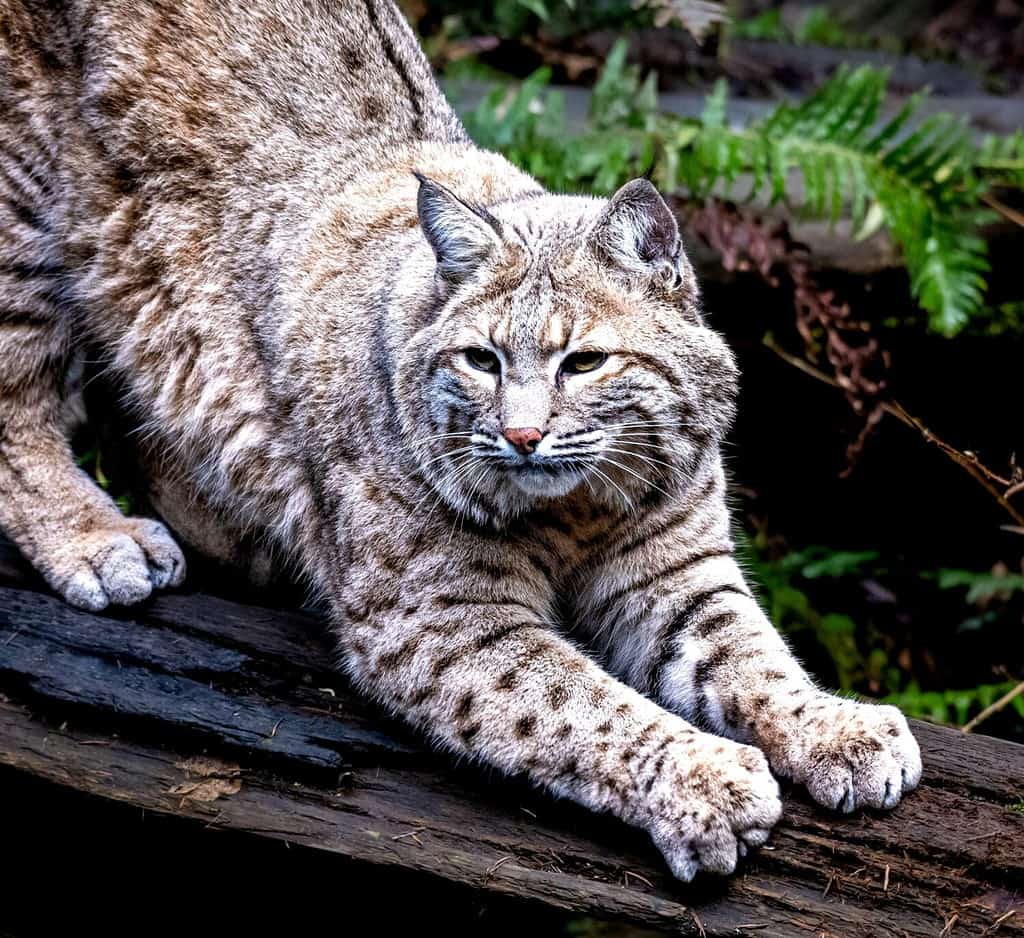
Bobcats typically live longer in captivity due to the controlled environment and the availability of food and medical care.
©Jeff Westhead/Shutterstock.com
Bobcats typically live for around 8 to 10 years in the wild but can live for up to 15 years in captivity. Factors such as disease, predators, human interference, and harsh weather conditions can affect the lifespan of a wild bobcat.
In captivity, bobcats typically live longer due to the controlled environment and the availability of food and medical care. However, even in captivity, their lifespan is still shorter than that of many other cats.
Are All Bobcats Normally Great Jumpers?

Bobcats make good use of their superior speed, agility, and reflexes.
©Chris Desborough/Shutterstock.com
Yes, most bobcats are excellent jumpers and have the ability to leap long distances in relation to their body lengths. Their powerful hind leg muscles aid them in leaping from 6 to 10 feet horizontally in a single bound. This leaping ability helps them hunt and handle difficult terrain.
In the wild, bobcats hunt and dine on small mammals, such as rabbits, mice, and squirrels. They have even been known to take down small deer and domestic dogs and cats. Because so many of their prey are speedy themselves, bobcats make good use of their superior speed, agility, and reflexes.
Bobcats sometimes also use their athleticism to evade threats to themselves. If they aren’t fast enough, these feline carnivores can become the victims of wolves, alligators, and mountain lions.
Thank you for reading! Have some feedback for us? Contact the AZ Animals editorial team.




